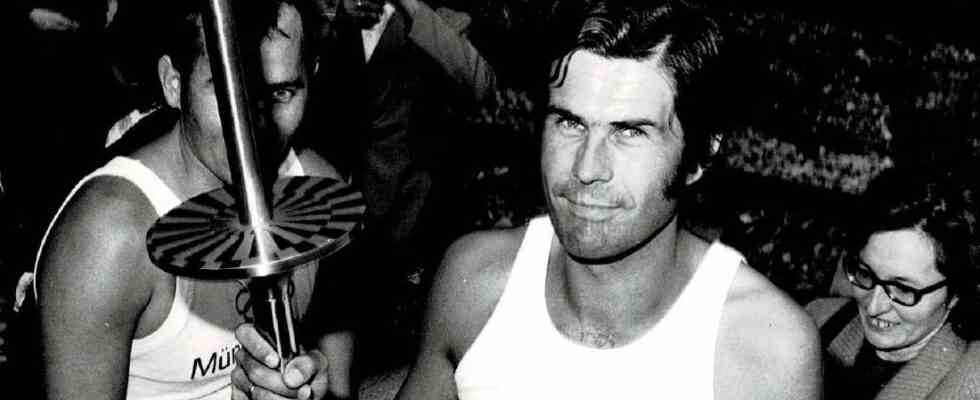Anyone who has ever been to the Peloponnese on holiday in Greece has probably also visited the Olympics. And not a few allow themselves to be carried away during this visit to organize a small private race in the ancient stadium. The track is 600 feet long, which is 192.28 meters in Olympia. How fast the runners were once here is not known. It was all about winning, the winner lit the flame. Volker Panzer, former top runner of TSV Unterhaching at the Olympic Games in Munich in 1972, wasn’t allowed to do that; but almost 50 years ago he carried the Olympic flame through the southern district to the city limits and handed it over at Geiselgasteig. You could say: A man from Unterhaching brought the Olympic flame to Munich. The torch is still on display in the club’s showcase in the sports arena on the Utzweg.
Volker Panzer, later second mayor of Unterhaching and father of the current town hall chief Wolfgang Panzer, was a medium-haul specialist at the time. In 1967 he even became German Vice Champion over 1500 meters. 3:43.7 minutes is his personal best time over this distance, he once ran the 800 meters in 1:48.7 minutes. He originally wanted to be a footballer and was a goalkeeper at FC Deisenhofen when he was young. But Panzer was definitely more talented when it came to running. Back then, track and field athletes trained on the cinder track, also in Unterhaching. It was 280 meters around the old gymnasium. “Later, a house next door was demolished, and then we were able to set up a 100-meter track,” says Panzer.
In the 1970s, jogging was still called a continuous run
In ancient times there were no such precise route lengths. You ran one or more stadia lengths and they varied. The long-distance run covered 20 stadium lengths, which was around 3.8 kilometers in Olympia and 3.5 kilometers in Delphi. The marathon is a modern invention. It was held for the first time in Athens in 1896, at that time still over 40 kilometers. It has been 42.195 kilometers since the 1908 London Games, when the royal family insisted that the race be started outside the window of Windsor Castle. And it has remained at this strange distance ever since.
Incidentally, it was also the English who held running competitions in the late 18th and 19th centuries. These competitors, who competed on foot over very long distances, called themselves pedestrians. Six-day runs, for example, where the aim was to cover as long a distance as possible in this time, were popular. A famous Scottish pedestrian was Robert Barclay Allardice of Ury, known as Captain Barclay. He is said to have once made a bet to run a mile for a thousand hours. So he was on the road for almost 42 days, alternately pausing at the beginning and end of the hour, and finally collected the equivalent of 50,000 euros for this service.
A lot has also been said about his training. He is said to have freed himself from toxins before training periods through massive sweating, sometimes with the help of alcohol, and regularly consumed phosphates. Breakfast was raw steak, stale bread and stale beer. If the reports are correct, he completed 32 to 40 kilometers a day spread over the day, but not only limited himself to endurance training, but also made a name for himself as a log thrower. After all, he was 74 years old.
Running wasn’t that popular at the time when Volker Panzer started. That was in 1956/57. Although the sports physician Ernst van Aaken from near Düsseldorf founded the first endurance running groups in the 1950s, it was not until the New Zealander founded the world’s first jogging club in the early 1960s and the jogging movement spread across America Europe came, it was to take some time. When Panzer was training for championships with his athletics group in the Perlacher Forest, the runners from Unterhaching were still among the few who met for a joint endurance run. In competition, however, Panzer did not run long distances. He didn’t have any ambitions to run a marathon, he says.
He remained true to running as a fitness sport even after the end of his sporting career. For a long time he headed one of the TSV running groups, which were founded in 1975 and were very popular. Back then, 50 to 60 people met regularly in the parking lot at the end of Isartalstraße to run together. Until Panzer turned 75 and an injury slowed him down, he continued to jog regularly, in the Perlacher Forest and also in the Hachinger Tal landscape park.

